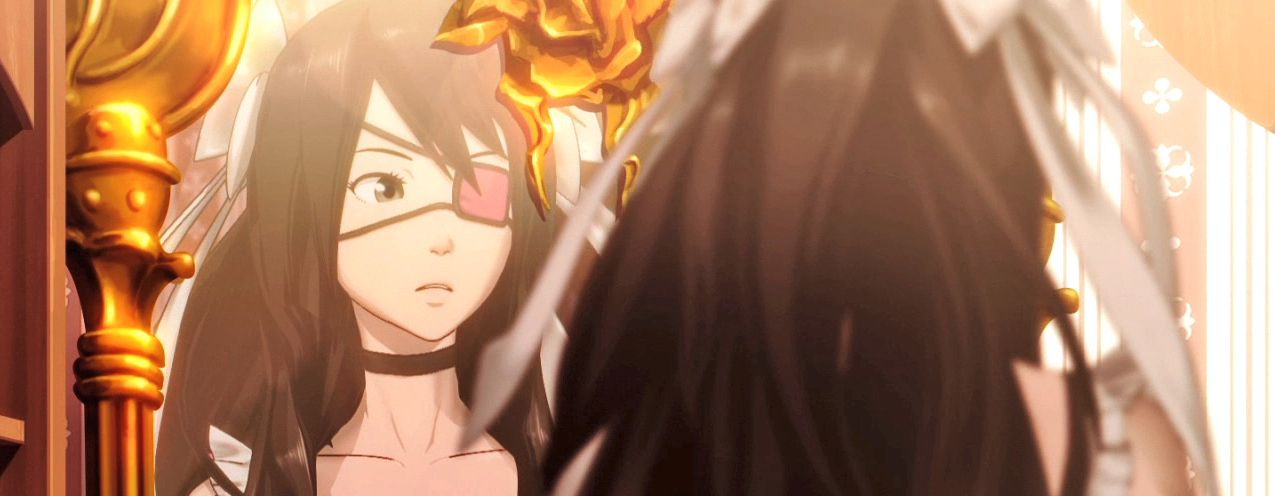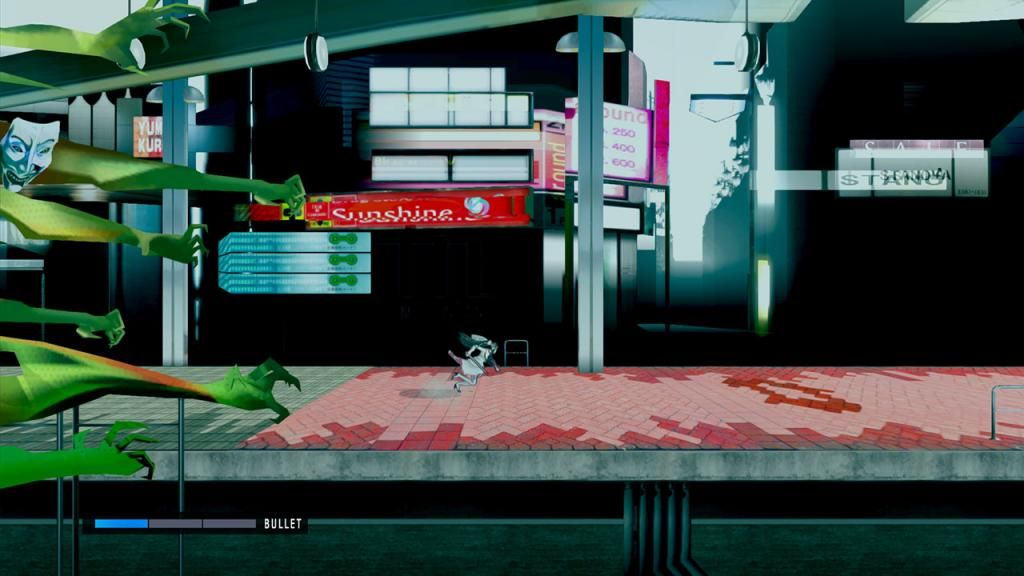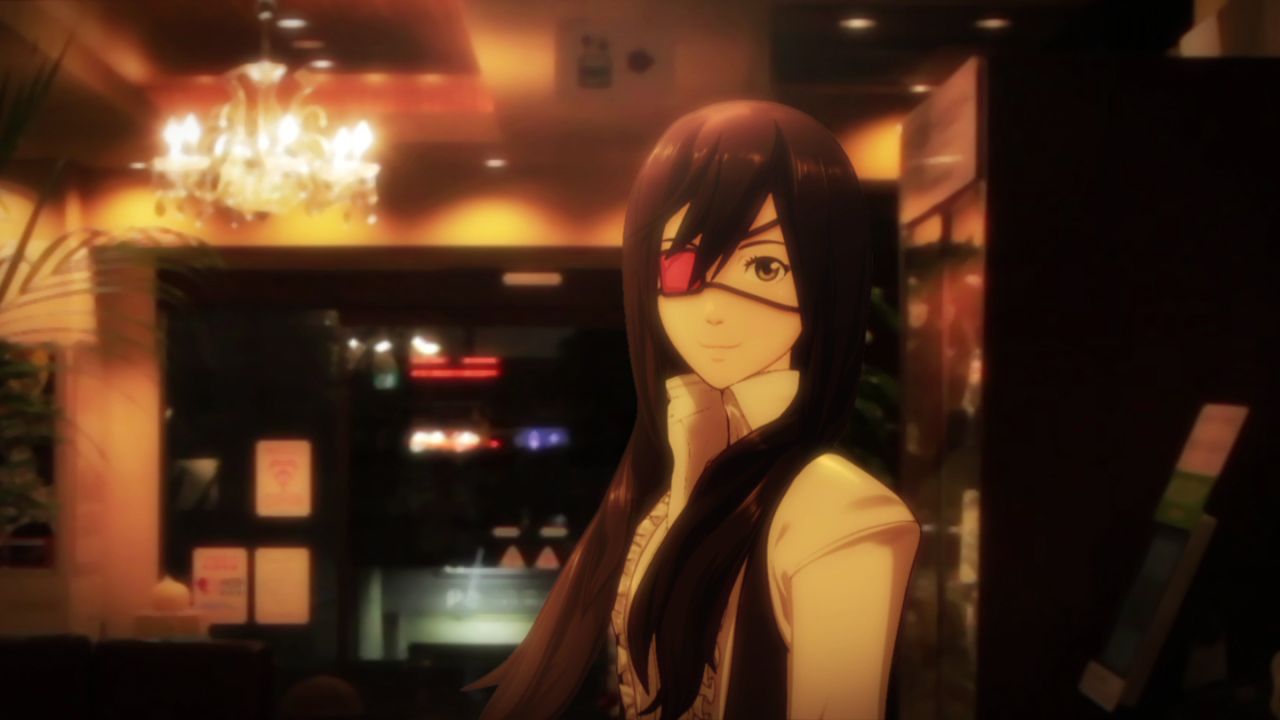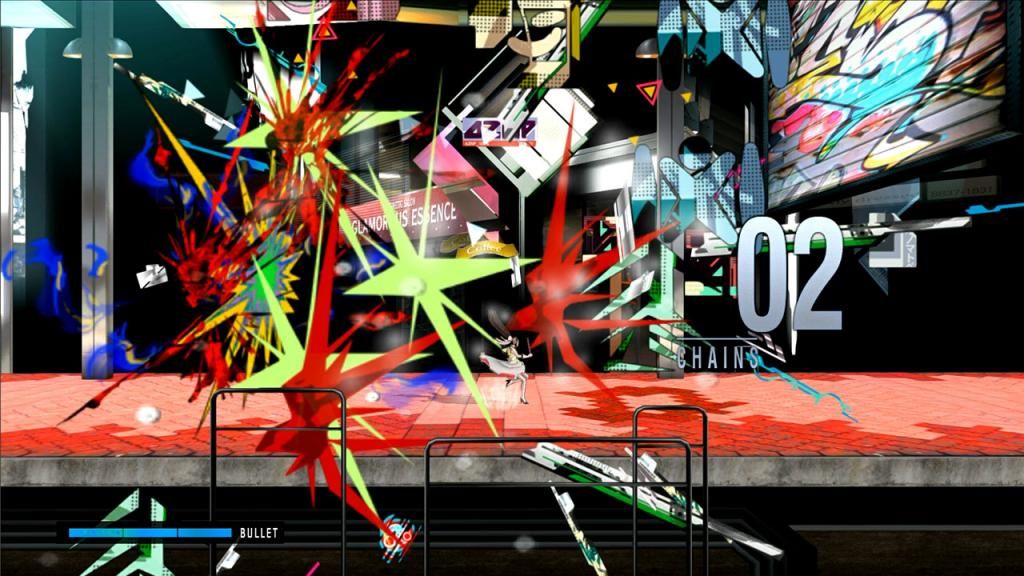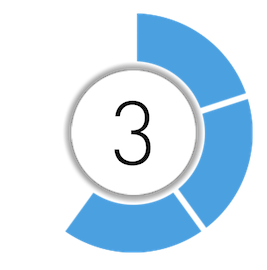Ranko Tsukigime's Longest Day is strange. Not in the usual Suda51 fashion (though it's definitely that too), but in the way it attempts to combine the film and video games mediums in a concise package. It's not a new concept by any means, and it's definitely been executed better elsewhere, but RTLD differs from its contemporaries by running within typical cinematic length (under two hours), making the experience much more like a film. One might assume a game adopting this unique approach would utilize every second of screen time, but while RTLD's cutscenes are absolutely terrific, its gameplay mostly plays second fiddle.
That's a shame, because Ranko Tsukigime's Longest Day's plot is a bizarre roller coaster of surreal events and over-the-top action, brought to life with some truly excellent animated sequences. Ranko, first depicted as a normal high school girl, is quickly revealed to be a dapper assassin, wielding one of the coolest weapons imaginable: a pink violin sniper, complete with a sword-like bow. The opening cutscene wonderfully sets the stage for an absolutely unique experience, but quickly jettisons its creativity when Ranko is finally controlled.
The playable sections of RTLD are simple 2D platforming segments that have you slashing through demons and jumping, hovering, wall-jumping and sliding through stages to reach the goal. There's no health meter, but slowing down too long will quickly see you grabbed by a horde of demon hands that perpetually follows you from the left of the screen. It's therefore imperative (and fun) to build and maintain momentum through well-timed twitch gameplay. Should the green palms advancing from behind ever become too threatening, can simply fire a shot from you sniolin, but only after enough demons have been slayed to be awarded a bullet. The gameplay is simple but enjoyable, at least for a little while.
The problem is that rarely is any hint of variety or challenge displayed once all of its mechanics have been introduced early on, and apart from some slight environmental differences, the levels are largely interchangeable. It's this half-hearted design that makes the actual gameplay segments feel like an afterthought, and it's hard not to feel disappointed that the designers couldn't have produced something a little more robust and important to feature alongside the spectacular story.
They were close, too. Vibrant, colorful art and design litter the levels and carry over the established personality of the animated sequences, but it's ultimately an unfinished effort due to the repetitive level design and shallow mechanics. That ends up being RTLD's fatal flaw; it's got a great story, tangible personality and an eye-catching artistic style, but at the end of the day a game has to be fun to really be deemed a success. It has its moments, but the playable portions are too often tolerated simply to reach the next amazing cutscene. To their credit, the designers seem to have predicted this reaction, as the cutscenes are doled out more and more often as the game is progressed through, but the stages should have been shown more attention across the board instead of the occasionally great areas barricaded within generic design that plague it.
With that said, there are a few awesome moments of gameplay in RTLD, but they're only notable because they're a change from the dull, uninspired hack and slash platforming that fills the rest of it. Luckily, many of these are saved for the game's second half, and you'll likely know exactly when RTLD starts to ramp up. The condensed length means plot twists that would normally be generously spread throughout hours are thrown at you almost non-stop, and those who're a fan of Suda51's trademark strangeness are in for a real treat here.
Those not, however, should steer well clear of RTLD. It's surreal and bizarre, yes, but it's also experimental in its art direction, with many cutscenes opting for a different art style than the last. It could be jarring for players unfamiliar with Japanese art or culture, but the initiated will find a brilliantly satirical homage to Japanese storytelling full of all sorts of pokes at tropes.
With that said, you probably won't be playing RTLD if you don't at least moderately enjoy anime. The game is sold as part of a $39.99 package that contains the game and four short anime films from four esteemed directors, and can't be bought separately. It's a steep price for such a short game to be sure, but the game's ambitious desire to be a sort of playable movie is, while flawed, an experience unlike any other. It's a title that pushes the boundaries of both mediums, and it should absolutely be celebrated for that. Overall it's quite a package, and along with a slew of unlockable concept art and alternative costumes for Ranko, even the short interactive portion offers some decent incentive to return.
Closing Comments:
For all of its faults, Ranko Tsukigime's Longest Day begs to be played, even for its outlandishly bizarre story alone. The majority of its gameplay seems like a disappointing afterthought, but the few highlights are well worth the brief journey if you find yourself within the game's very specific audience. It's not Suda's best, but it's ambitious, and there's a lot to be said for that. If you're looking for your next unique and obscure experience, you've found it.
Platform: PlayStation 3

